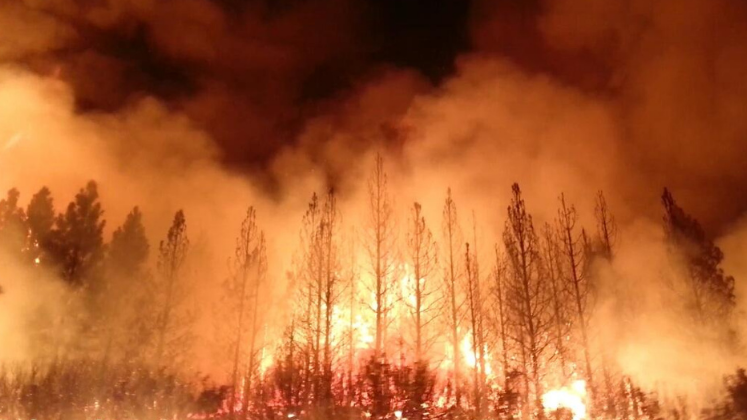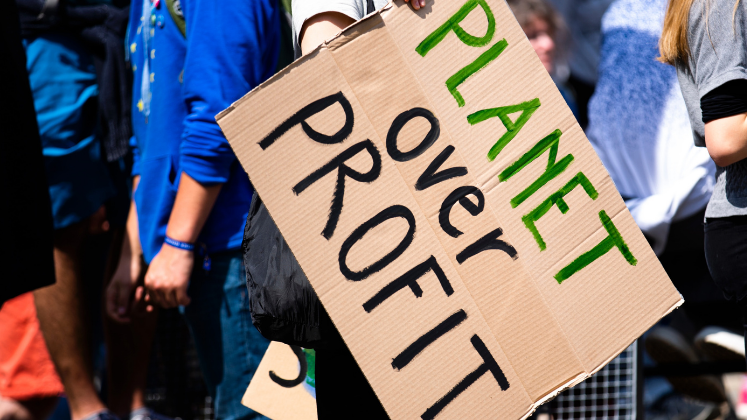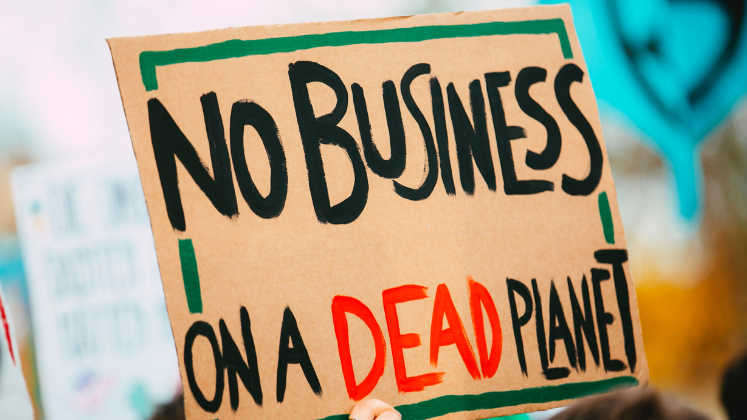In this extract from her new book, Ending Fossil Fuels: Why Net Zero Is Not Enough (Verso), Holly Jean Buck outlines the problems with the ‘net zero’ discourse surrounding carbon emissions and our use of fossil fuels.
How to Not Say the F Word
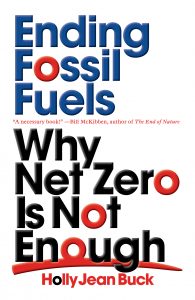 Net zero is both tedious and a hot trend. Net zero has the effect of being able to instantly transform the exciting, terrifying work of our times into something numb and boring. Net zero is the stuff of webinars, white papers, consultant reports. But it’s also popular. At the time of this writing, at least six countries have a target of net-zero emissions by mid-century solidly in law, several others have them in proposed legislation, and another dozen have net-zero targets in policy documents. Scores of cities and subnational jurisdictions have also announced net-zero goals. Many of the world’s largest companies, from tech giants like Apple to fossil fuel producers and utilities, have also jumped aboard the net-zero train. Microsoft aims to be not just net zero but carbon negative by 2030, and remove all of its historical emissions since its founding in 1975.
Net zero is both tedious and a hot trend. Net zero has the effect of being able to instantly transform the exciting, terrifying work of our times into something numb and boring. Net zero is the stuff of webinars, white papers, consultant reports. But it’s also popular. At the time of this writing, at least six countries have a target of net-zero emissions by mid-century solidly in law, several others have them in proposed legislation, and another dozen have net-zero targets in policy documents. Scores of cities and subnational jurisdictions have also announced net-zero goals. Many of the world’s largest companies, from tech giants like Apple to fossil fuel producers and utilities, have also jumped aboard the net-zero train. Microsoft aims to be not just net zero but carbon negative by 2030, and remove all of its historical emissions since its founding in 1975.
Even the Green New Deal, a conceptual innovation that links climate change with broader social goals, begins with the climate math. House Resolution 109 — the resolution introduced in the House that serves as a sort of vision document — kicks off by reporting findings from the Intergovernmental Panel on Climate Change’s Special Report on 1.5°C. Keeping temperatures below 1.5°C will require ‘(A) global reductions in greenhouse gas emissions from human sources of 40 to 60 percent from 2010 levels by 2030; and (B) net-zero global emissions by 2050,’ it states. The resolution talks about achieving ‘net-zero greenhouse gas emissions through a fair and just transition for all communities and workers.’ It’s a tremendous document. But it doesn’t lead with ending fossil fuel production. In fact, it doesn’t even mention the words ‘fossil’ or ‘fuels’.
Neither does the landmark Paris Agreement. Read the texts, and you’ll be struck by this weird verbal jujitsu of documents aimed at ending this thing that they can’t even name. The European Green Deal is not much better, either: it does address fossil fuels a few times and call for phasing out subsidies to fossil fuels, but it certainly does not center production. Rather, these — and most climate policy — center emissions, the byproduct of combustion, thus skipping right past production.
This isn’t a new observation. The Indigenous Environmental Network, for example, released a statement that strongly rejected the net-zero emissions language in the resolution. While they were grateful to see legislative support for climate action, they could not fully endorse the resolution until it made explicit the demand to keep fossil fuels in the ground. ‘Furthermore, as our communities who live on the frontline of the climate crisis have been saying for generations, the most impactful and direct way to address the problem is to keep fossil fuels in the ground,’ they wrote. ‘We can no longer leave any options for the fossil fuel industry to determine the economic and energy future of this country.’
While activists pointed out the omission of references to fossil fuels, the Green New Deal was still generally celebrated as an important step. The innovation of the Green New Deal is the way it broadens concern to include the ‘several related crises’ the resolution goes on to list: declining life expectancy, income inequality, and racial and gender wealth and earnings gaps. But what starts out as a remedy for inequality may end up as a carbon accounting exercise.
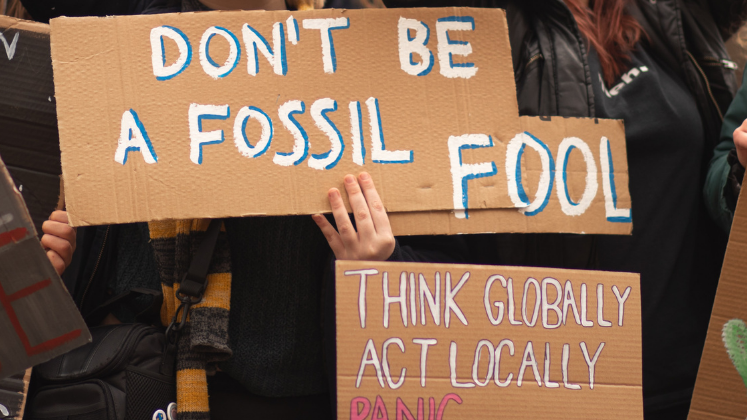
Photo by Callum Shaw on Unsplash
Rather than jump into figuring out the nuances of a just supply-side climate policy — which is really hard! — well-meaning climate and sustainability professionals may spend several years wandering in the thickets of ‘net zero’. Again, net zero, at its simplest, means balancing some amount of positive greenhouse gas emissions with negative emissions or removals. Well, what amount of positive greenhouse gas emissions are we talking about? That often remains conveniently unclear. Goldman Sachs, for example, estimates 25 percent of current emissions would remain. They state that these anthropocentric greenhouse gas emissions are not currently abatable using available large-scale commercial technologies, calling for both innovation and investment in sequestration technologies to achieve net zero. A quarter of current emissions is still a lot of emissions. Decarbonization roadmaps set out by countries and cities tend to be vague on this point, when they even exist, but many of them include 10–20 percent of baseline emissions as ‘residual’ emissions, or remaining positive emissions, which will need to be compensated for by removals. This is a looming political fight, though in some places, it has already been decided: New York State, for example, has set the maximum residual emissions at 15 percent of 1990 levels; Massachusetts law similarly requires an 85 percent reduction from 1990 levels.
Is net zero really more ambitious than what preceded it? Net-zero targets have replaced earlier targets, which often took nonintuitive goals, such as an 80 percent reduction of greenhouse gases from 1990 levels by 2050. Replacing these reduction goals with net-zero targets has generally been welcomed as a strengthening of ambition. But it may not be in all cases: in theory a country could have a net-zero target that is less than an 80 percent reduction of greenhouse gas emissions from some earlier point, as long as those positive emissions can be compensated for by negative ones.
Net zero by 2050 is an ambitious goal relative to the pace of climate action thus far. Achieving it would be incredible. But there are also ways in which it is the wrong goal. The concept of net zero offers balance and stability. It also offers ambiguity that can be exploited.
Cleaner Fossil World or Near-Zero World?
Imagine a world that has reached net zero near the end of this century. Let’s call it ‘Cleaner Fossil World.’ Cleaner Fossil World still has fossil fuel companies, particularly oil and gas companies. They have shifted their portfolios and are now producing fossil fuels with lower carbon intensity. Oil is still produced for aviation, shipping, and industry. The companies have invested in systems to capture billions of tons of carbon dioxide from the atmosphere, injecting it underground and turning it into fuel, an energy intensive process. This allows a class of people in the developed world to keep internal combustion vehicles with drop-in fuels. Meanwhile, energy has become more expensive, as fossil fuel companies have passed the cost of all their new carbon-capturing equipment down to consumers, and many people live in energy poverty, carefully rationing the solar power they have access to.
But this Cleaner Fossil World has achieved net-zero emissions by sucking up tremendous amounts of carbon. Vast tree plantations that have decimated biodiversity provide a portion of those negative emissions. Land is routinely appropriated for carbon storage and renewable energy generation. The companies and platforms that finance, arrange, and perform the industrial services of removing all this carbon hold tremendous power, because people rely on them for climate stability. Cleaner Fossil World might align with the International Energy Agency’s Sustainable Development Scenario or Shell’s Sky scenario. In this world, there’s a circular carbon economy and a continued role for oil and gas, but oil and gas production is decarbonized.
Now imagine a second world that has also reached net-zero emissions near the end of the century. In Near-Zero World, the remaining greenhouse gas emissions arise primarily from agriculture. The need for negative emissions is lower, and they can be generated through modest infrastructures. Near-Zero World might follow along with the International Energy Agency’s Net Zero by 2050 scenario, which paints a world that quintuples investment in solar photovoltaic technology by 2030, shuts down most coal plants, electrifies half the vehicle fleet by 2030, retrofits buildings, and sees significant behavioral changes.
Cleaner Fossil World and Near-Zero World might sound pretty much the same. Anyone could be forgiven for thinking they are the same, if they heard about them casually. Both of these worlds have attained net zero. But which is more livable? Which is more plausible? What ‘net zero’ does is allow companies and policymakers to conveniently ignore the choices between these worlds and countless others. Net zero may be a temporary state on the way toward a fossil-free future, or it may be a permanent condition where fossil fuels continue forever, re-interpreted as part of sustainable carbon management. Net zero does important work: it shifts attention entirely onto emissions, counting and balancing them. This draws attention away from the point of production, which is where we need to also be focusing.
The argument here is this: without deliberately phasing out fossil fuels, we’re more likely to end up in Cleaner Fossil World. But that’s not even all that likely. What’s even more plausible is that the world never reaches net zero at all. The structures of power in place would only half-heartedly go about decarbonizing fossil fuels and call partway ‘good enough’, leaving us with a devastating 3°C of warming. Conversely, the chances for a livable planet are much higher if we frame our goals around ending production, aiming for an actual fossil-free world this century. Arguments about ending fossil fuels tend to read as Puritan ones: no compromise, total abolition — and so they get laughed off by ‘serious folks’ as ideological or unachievable. The set of arguments in Ending Fossil Fuels comes from a different rationale.
Note: This book extract gives the views of the author, and not the position of the LSE Review of Books blog, or of the London School of Economics and Political Science. Thank you to Verso for providing permission to publish an edited extract from Ending Fossil Fuels.




